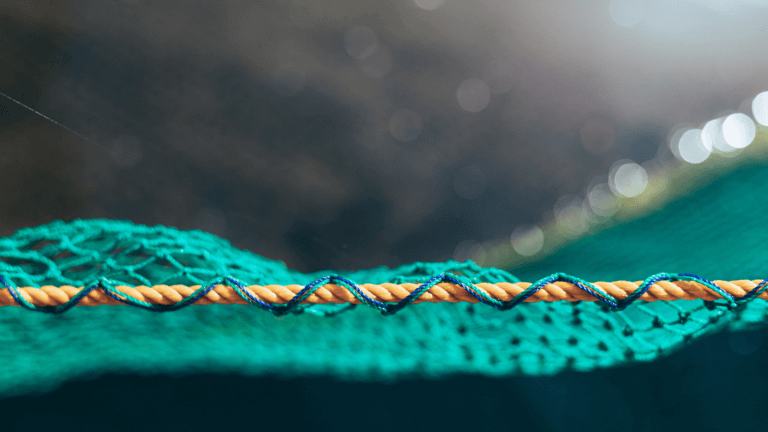Date of issue: 17 October 2022
The news.
The International Council for the Exploration of the Sea (ICES) recently published advice on Northeast Atlantic pelagic stocks.
The advised 2023 catch for Northeast Atlantic mackerel is no more than 782,066 tonnes; a 1.6% reduction from the 2022 catch advice. However, the agreed 2022 total allowable catch (TAC) was set at 1,131,416 tonnes. To follow the ICES advice in 2023, a cut of 31% is required.
The advised 2023 catch for Atlanto-Scandian herring is no more than 511,171 tonnes; a 14.6% reduction from the 2022 catch advice. However, in 2022 there was no agreement on the TAC; the sum of the declared unilateral quotas from the individual parties was 827,963 tonnes. In order to follow the ICES advice in 2023, a cut of 38% is required.
Why is it important?
The advice explicitly shows continued overfishing of these stocks. Fishing pressure on each stock is above sustainable levels (FMSY[1]).
This is having a major impact on seafood businesses – from the catching sector through to retailers. The mismanagement of these fisheries has so far resulted in the loss of Marine Stewardship Council (MSC) certification. Loss of certification implies that fisheries are no longer publicly recognised against well-known independent certification programs for fisheries sustainability.
More blue whiting?
The advised 2023 catch for blue whiting is no more than 1,359,629 tonnes; an 81% increase from the 2022 catch advice. This is due to a large upward revision of estimated recruitment in 2021 (now estimated to be at a historical high (71.6 billion fish), while last year’s estimate was 22.8 billion). The preliminary 2022 catch was calculated to be 1,107,529 tonnes. As such, compared to 2022, there is an opportunity for a 23% increase in the TAC.
The uptick in the advice for blue whiting is not linked to improved stock management. On the contrary, unprecedented levels of recruitment have flooded the fishery, effectively masking the underlying problems of inadequate management and governance, which mackerel, herring and blue whiting collectively suffer from.
Blue whiting has also lost its MarinTrust certification – which is conditional on MSC certification. The knock-on effect on the biggest customer of the fishery, salmon aquaculture, is a significant step back in responsible business practice and will impact retailer and foodservice companies, as well as consumers, who demand sustainable marine ingredients in feed.
The elevated advice for blue whiting offers a golden opportunity to Coastal States. The revised estimates of abundance allow all parties to scale-back their allocations and ensure the TAC does not exceed the scientific advice without taking real-term cuts. Will they seize this chance?
Who are we?
The North Atlantic Pelagic Advocacy Group (NAPA) was formed in 2019 in response to the ongoing dispute over quota allocations in the Northeast Atlantic. NAPA was created to advocate for long-term, sustainable management of Northeast Atlantic pelagic fisheries. We are a sector-wide, multistakeholder, global and non-competitive coalition of commercial business leverage. Since its inception, NAPA has attracted over 50 members – covering food service businesses, processors, buyers and retailers from Europe, Africa, North America and Japan. As a collective of businesses with a €802 million share of Northeast Atlantic pelagic purchasing, NAPA is directly invested in the responsible, science-driven management of these fisheries.
What do we want?
The conditions that have led to this overfishing are entirely political; Coastal States merely need to agree on catch shares that follow the ICES advice.
We are calling on the Coastal States involved in Northeast Atlantic pelagic fisheries to:
All Coastal States must prioritise resolving the allocation issues around these stocks. As this has proved difficult to date, NAPA is recommending a dispute resolution mechanism be employed to prevent unilateral quota-setting and to encourage Coastal States to operate within an agreement in the future.
In addition, all Coastal States should ensure that the overall catch for each stock does not exceed the ICES scientific advice. Each year, Coastal States agree to follow the advice2 and set TACs at the scientific advice level. However, due to a lack of political will to agree on allocations, these TACs are collectively exceeded, year on year. This overfishing must end.
Finally, long-term, multi‐annual management should be the underlying approach by default. All stakeholders benefit from agreeing to and working toward long‐term sustainable management objectives. This includes stable sharing arrangements and harvest strategies comprising precautionary harvest control rules for setting catch limits, a periodic review process, and any necessary mechanisms to transition from previous arrangements to a new system.
What happens if Coastal States fail?
In 2021, NAPA launched a new take on a traditional Fishery Improvement Project – the NAPA ‘policy FIP’, which covers actions to drive sustainable management for Northeast Atlantic mackerel and Atlanto-Scandian herring. A MarinTrust Improver Program for blue whiting – the third pelagic stock under our remit – was also launched.
The aim of these FIPs is to provide a time-bound framework to seek improvement in management through commercial pressure. Should no improvements be made then individual NAPA members will review their individual purchasing decisions – some businesses have said they will cease sourcing, while others may review their sourcing options, with a view to only source from Coastal States championing sustainability.
[1] The fishing pressure that gives the maximum sustainable yield in the long term. Overfishing means that fishing pressure is higher than FMSY.

Date of issue: 19 July 2021 The North Atlantic Pelagic Advocacy Group (NAPA) has announced...
Read More >
Date of issue: 18 October 2022 Open letter to ministers from NAPA and the Marine...
Read More >
Date of issue: 1 October 2024 The North Atlantic Pelagic Advocacy Group (NAPA) is pleased...
Read More >